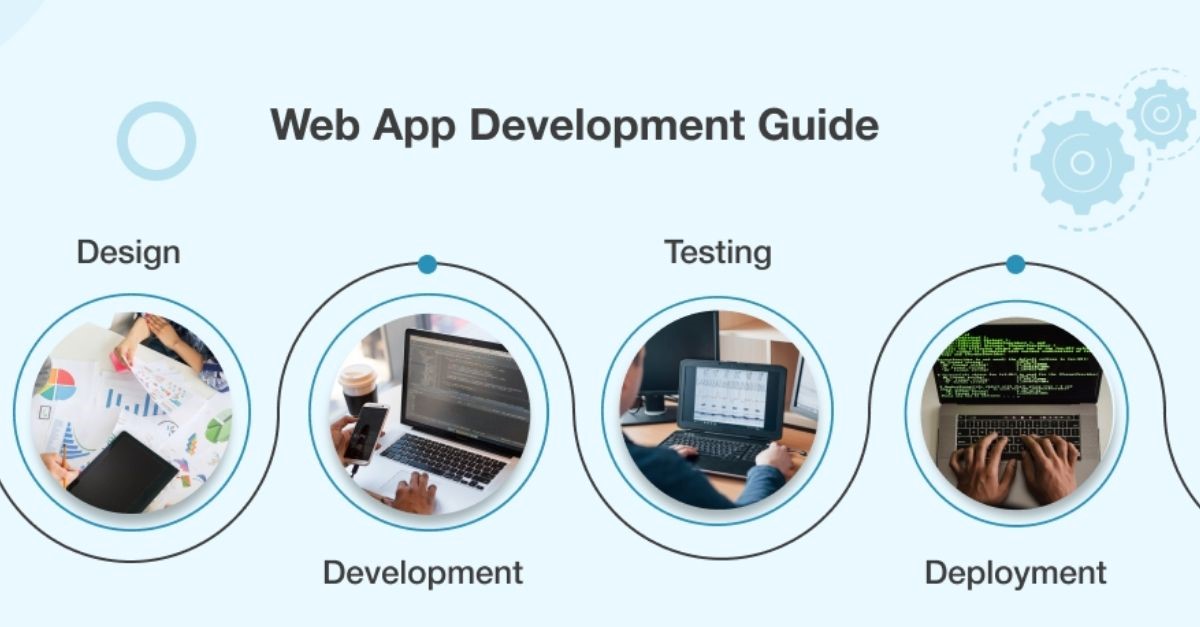Web applications are now an essential component of our everyday life in the digital age. Web applications influence our relationship with cyberspace, while we’re using them for online shopping, money management, or social network friend connections. The success of these applications hinges on their ability to provide empowering user experiences. This blog delves into the pivotal role of web application development in creating user-centric and empowering digital interactions.
Revolutionizing User Empowerment: The Impact of Web Application Development:
1. Understanding User-Centric Design:
User-centric design is at the core of empowering web applications. It begins with understanding the needs, preferences, and behaviors of the intended users. Developers, in collaboration with designers and user experience (UX) experts, conduct research and gather insights to create a user persona. These personas represent typical users and serve as a guiding reference throughout the development process, ensuring a seamless user experience, just as a forex history API provides valuable data for financial applications.
2. Performance Optimization:
A critical aspect of web application development is performance optimization. Slow-loading web pages or unresponsive applications can frustrate users and drive them away. To empower users, developers employ various techniques to enhance performance. These include optimizing images and multimedia, minimizing code, and leveraging content delivery networks (CDNs) to reduce latency.
Slow loading is a common practice in modern websites, which delays loading non-essential items until they are truly needed. This method provides a faster and more effective user experience by saving bandwidth and expediting the first web page load.
3. Responsive Design for Accessibility:
Empowering user experiences extends to accessibility. User-disability features like vision or motor limitations should be included in the design of web apps. To guarantee the application is useable on a variety of platforms, including PCs, tablets, and smartphones, adaptive design principles must be implemented.
To make applications that are simple to use with screen readers along with other assistive technology, developers should also take into account internet accessibility rules, such as the Web Content Accessibility rules (WCAG).
4. Security and Data Privacy:
Empowering user experiences relies on trust and safety. Users must feel confident that their data is secure and their privacy is protected when using website development services. Programmers must put adequate safeguards in place to protect user data from online threats and breaches.
This entails encrypting data transmission, enforcing strong authentication, and regularly updating and patching security vulnerabilities. Complying with data protection regulations, such as GDPR or CCPA, is also crucial for building trust with users.
5. Streamlined User Journeys:
Web application development involves mapping out user journeys and ensuring they are as seamless as possible. Developers focus on creating logical navigation paths and reducing friction points. In particular, e-commerce apps may reduce the assortment of clicks required to execute a purchase and streamline the checkout process. This enhances the user interface and enables users to complete their intended tasks.
6. Cross-Browser Compatibility:
User experiences can be empowered without being restricted to a particular web browser. It is the responsibility of architects to make certain that online applications work with a variety of browsers, such as Elk Layer, Microsoft’s Edge, Apple Safari, Mozilla Firefox, and Chrome by Google. Cross-browser interoperability makes ensuring that users, whichever browser they select, have identical and pleasurable experiences.
This requires rigorous testing and the use of modern web development techniques that work across different browsers. It prevents users from encountering frustrating issues like broken layouts or non-functional features, empowering them to interact with the application seamlessly.
7. Feedback and Iteration:
User feedback is invaluable in the journey of web application development. Developers incorporate user feedback into the iterative process of improving the application. This constant refinement is essential for meeting evolving user needs and expectations.
Empowering user experiences means actively listening to user feedback and making adjustments to enhance the application. Developers should implement user surveys, feedback forms, and analytics tools to collect and analyze user data.
8. Mobile-First Approach:
As more individuals use handheld devices, it turns increasingly vital to create web applications with a mobility-first attitude. Mobile users should have the same sense of empowerment as users of computers. With handheld devices in consideration, developers create apps that are quick to launch, responsive, and simple to navigate on smaller displays. This method gives customers the ability and comfort to use and engage with the program from their cell phones or tablets with ease.
Final Thought:
Giving users a strong experience is essential in a world where online applications are a necessary component of daily life. Not merely functional software, but tools that increase user confidence, productivity, and happiness, is the aim of web application development. Through the prioritization of user-centric design, performance optimization, accessible assurance, safety, and privacy protection, developers craft apps that enable users to confidently fulfill their objectives.
This commitment to user empowerment drives the continuous refinement of web applications, ensuring that they remain valuable and relevant tools in the digital landscape.




